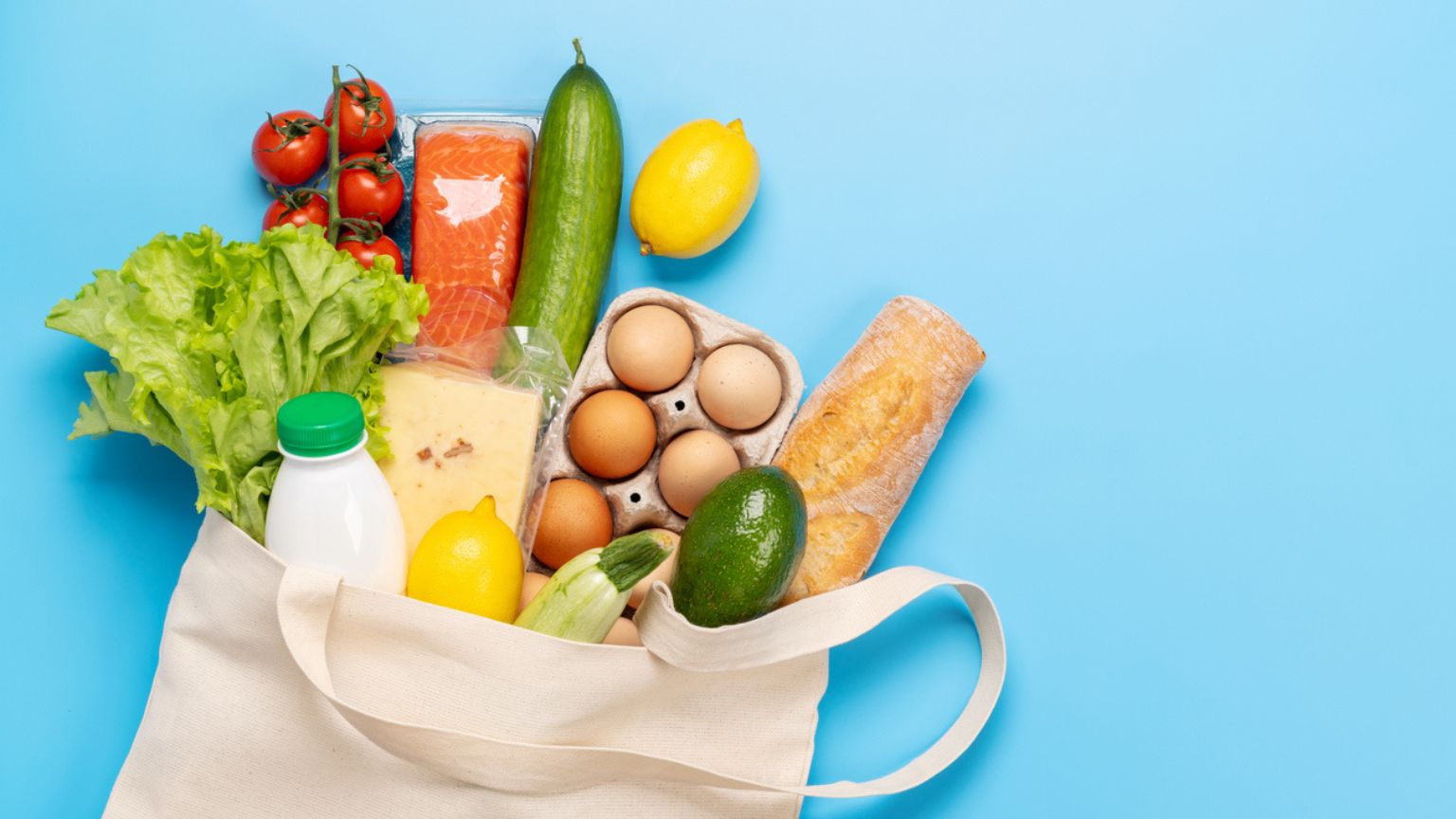Recent studies reveal the link between health issues and ultra-processed foods. Nutritionist Rob Hobson, author of Unprocess Your Life reveals 6 steps to unprocessing your life
We are all living a faster pace of life, which has influenced our food choices and how we eat. The biggest drivers for food choice have become convenience and budget, and the foods that satisfy both requirements are often ultra-processed.
The convenience of ultra-processed foods (UPFs) has made them staples in many diets. Yet, their impact on health remains a growing concern and debate topic. These foods undergo extensive processing and often contain additives that have transformed how people eat globally.
recent studies have begun to unravel the complex relationship between UPFs and health issues
However, recent studies have begun to unravel the complex relationship between UPFs and health issues, including obesity, heart disease, and diabetes.
While science tells us a lot about how these foods can harm our health, how does this translate into everyday life and our food choices?
What are ultra-processed foods?
There is no agreed definition of an ultra-processed food. However, they generally have five or more ingredients and can’t be created at home.
They include additives and ingredients such as preservatives, emulsifiers, sweeteners, artificial colours, and flavours.
These foods also have a long shelf life and are manufactured to be convenient, cheap, and hyper-palatable, making them easy to over-consume.
READ MORE: How Ultra Processed has your life become?

What does the research say about UPFs?
There is a lot of compelling research to show that higher intakes of UPF are associated with diseases such as obesity, cardiovascular disease (heart disease and stroke), type 2 diabetes, inflammatory bowel conditions, depression, frailty conditions (poor bone and muscle strength), dementia and certain cancers.
Indeed, a review of 43 studies carried out in 2020 found at least one adverse health outcome associated with the consumption of ultra-processed food in 37 of these research papers.
These negative health outcomes included obesity, overweight, cancer, type 2 diabetes, cardiovascular diseases (heart disease and stroke), IBS, depression, and frailty conditions such as poor bone and muscle health.
There have been many fascinating studies, but a few have stood out among them. One study by the Fourth Medical Military University in China involved pooled data from 325,000 people divided into four groups depending on their daily ultra-processed food intake.
Those who ate the most ultra-processed foods were 39 per cent more likely to develop high blood pressure
Those with the highest intakes of ultra-processed foods were 24 per cent more likely to develop heart disease or suffer a stroke or heart attack. Furthermore, for every 10 per cent increase in the proportion of ultra-processed foods, there was a 6 per cent increase in heart disease risk.
This notion of ‘the more you eat, the greater the risk’ is common in all studies linking ultra-processed foods to poor health.
Another study by researchers at the University of Sydney followed 10,000 middle-aged women for 15 years and recorded what they ate. Those who ate the most ultra-processed foods were 39 per cent more likely to develop high blood pressure, significantly increasing their heart attack and stroke risk.
What makes these studies so interesting is that even after adjusting for the effects of saturated fat, salt and sugar on the risk factors for disease, an association still remained, indicating it may be the additives and not just the nutrients in the food increasing the risk of disease.
Other traits of UPFs also contribute to disease and obesity risk, such as changes to the food matrix (foods become softer and more accessible to overconsume while bypassing satiety signalling), the ratio of carbs to fat in foods having a synergistic effect on the brain reward systems (increased addictiveness) and the addition of flavour enhancers and texturisers to improve mouthfeel.
READ MORE: 9 proven ways to prevent heart disease

Does this mean we have to cut all UPFs out of our diet?
There is no need to avoid them altogether, as this is not a realistic or sustainable approach in the long term. While the science is compelling, there is still a way to go before we fully understand precisely what additive is causing what harm and in what quantity.
Many of these studies are also observational, meaning they do not prove cause and effect between the UPFs and diseases in question.
However, many UPFs are high in saturated fat, salt, and sugar, so in large quantities, they are already not good for our health and increase the risk of disease. The additional potential harm done by additives and the addictiveness of these foods only compounds the fact that we should eat less of them, even more so if your intake is high.
It’s essential to approach the topic of ultra-processed foods (UPFs) without overly simplifying it as a matter of ‘eat this, not that’. There is much debate for example over the nutrient dense UPFs that offer health benefits in the form of fibre and other key nutrients including iron, calcium, and B vitamins such as bread, yoghurt and breakfast cereals.
many UPFs are high in saturated fat, salt, and sugar
It is also essential that foods not become demonised, or we see a resurgence of the “clean eating” movement, which sends out the wrong message about food.
Suppose you try to do everything at once. In that case, it becomes a bit like a faddy diet as you obsess over food and eventually decide to give up as it all becomes too difficult to maintain.
In fact, I recommend you do not give up all UPF and start by focusing on small changes that become habitual, like making your own tomato ketchup each week or baking your own bread as little by little you begin to cut down on the amount of UPF you consume.
If some things are too difficult to give up, such as mass-produced bread, which may be a staple if you’re on a tight budget and unable to make your own, try tackling another part of your diet.
What about supplements?
Ultra-processed foods have a different nutritional density than whole foods, which means if you eat a diet high in these foods, you may be missing out. While food comes first, you may consider taking a multivitamin and mineral to bridge any gaps in your diet.
Vegans should always consider taking vitamin B12 while everyone should take vitamin D during the autumn and winter as you cannot get this nutrient from food alone.
Try: Healthspan vitamin D3 10mcg

What steps can you take to unprocess your life?
There are a few simple steps you can take to unprocess your diet. Still, it would help if you were realistic about what you are willing to replace and the reality of this becoming a long-term habit change instead of a quick fix.
Step #1 Have a look at what’s already in your cupboards
Firstly, take a good look at what you eat and what is in your kitchen cupboards to see your intake of UPF. From here, you can start planning your strategy.
Step #2 Find your weakest point during the day when you rely primarily on a UPF
This may be your work lunch when you feed the kids or come in from work and can’t face cooking – try to work on this part of the day first.
You could prepare lunch for work or create something using simple ingredients you bought in the supermarket, such as cooked chicken, canned pulses, and salad with olive oil and lemon juice.
If dinner time is your weak spot, you could develop a repertoire of quick dinners or batch cooking one day to provide you with dinners for the week.
It goes without saying that there is a degree of planning involved, and you need to be prepared and organised with your weekly food shop to make sure you have everything in stock.
READ MORE: Add more whole grains to your diet with these 3 healthy plant-based recipes

Step #3 Look at some of the UPF meals you cook regularly and think about making your own homemade versions
Start with a couple of recipes and try batch cooking them to keep some set aside for convenience and cost saving, as cooking from scratch can be more expensive in some cases.
This might be a homemade pot noodle, fishcakes, chicken Kyiv or curry instead of a ready-prepared version or takeaway. Once it becomes second nature to make these yourself, they can become part of your go-to selection that you can whip by heart in a jiffy.
From here, you can start exploring more dishes.
Step #4 You don’t have to make everything from scratch
Some shop-bought products are much better than others. Take plant milk, for example – some are just the grain, legumes or nuts, water and possibly a pinch of salt.
In contrast, others contain additives like thickeners and stabilisers. You need to understand what to look out for on the label. The better ones are premium, so you could make your own!
Step #5 Find the UPF with the most minor ingredients over the one with the most
It may be a case of picking the best of two UPFs, so check the food label for the one with the most minor additives. This may be a sauce you can’t live without, or you may choose a plain quality crisp over a Pringle.
Step #6 Don’t view all of this as a chore
Start slow and simple and work from there. Involve the family, get the kids to make some of these foods more pleasurable, and teach them a few things about home cooking and healthy eating.
It also doesn’t have to get expensive as there are always ways to source cheaper foods, which often means stepping outside the supermarket and shopping in multiple places on the high street and local market to get the best deals.
What are some common UPF food swaps?
- Replace fizzy drinks with infused water or herbal teas.
- Opt for homemade vegetable crisps or nuts and seeds instead of crisps.
- Choose sourdough or homemade wholemeal bread over mass-produced packaged bread.
- Prepare homemade versions of ready meals and takeaways.
- Swap sugary breakfast cereals with homemade granola.
- Make snack bars at home using fruit, nuts, and oats.
Cutting down on your UPF intake doesn’t need to be complicated. The secret is starting slowly and being realistic about what you are willing to commit to, then exploring ways to make better food choices by being mindful of the foods you are choosing to eat and exploring ways to make more food at home.
Rob Hobson is the author of Unprocess Your Life available to buy on Amazon.
Like this article? Sign up to our newsletter to get more articles like this delivered straight to your inbox.





















































